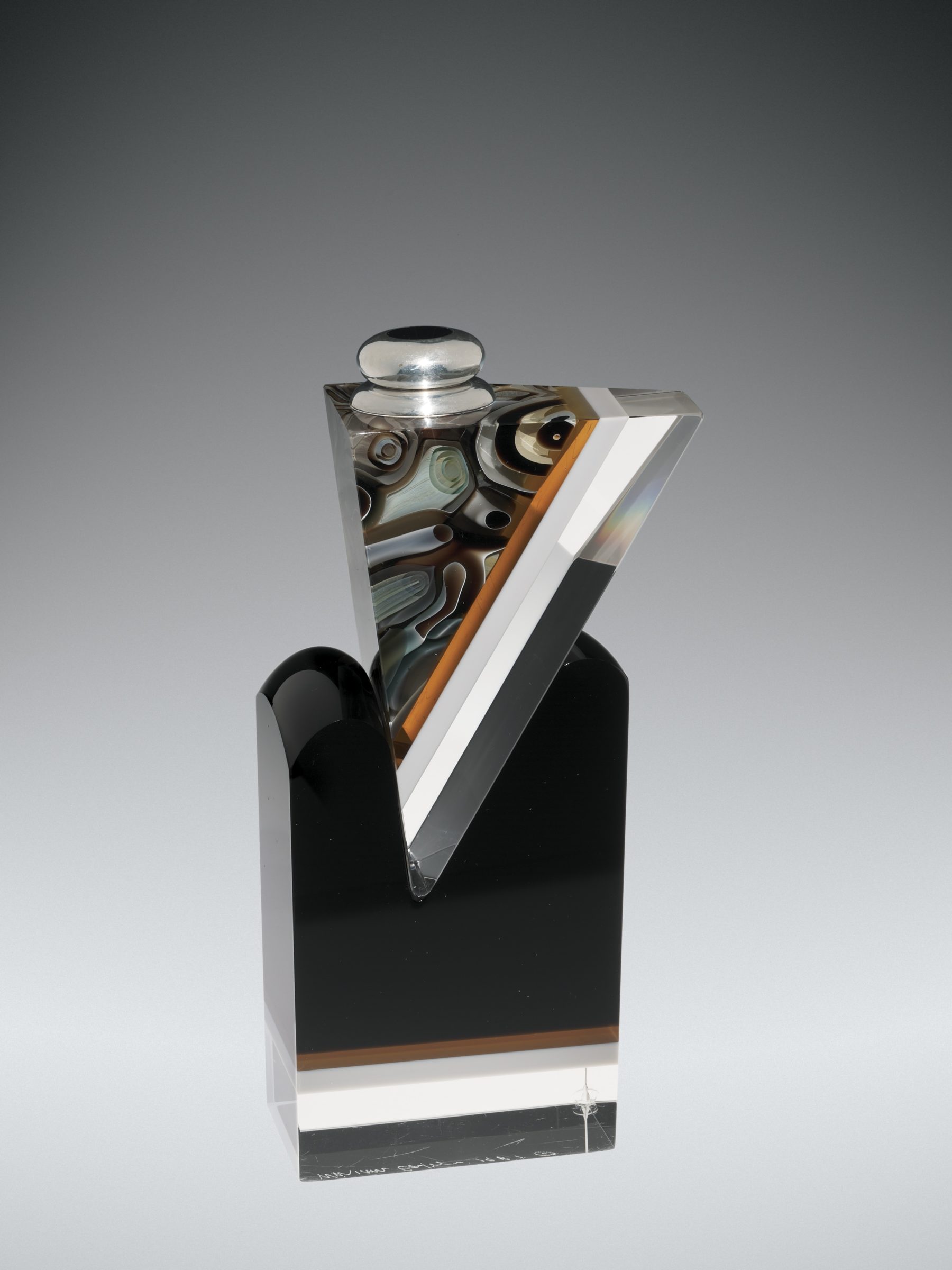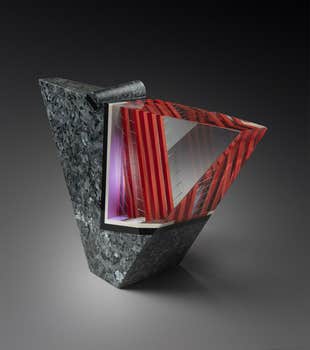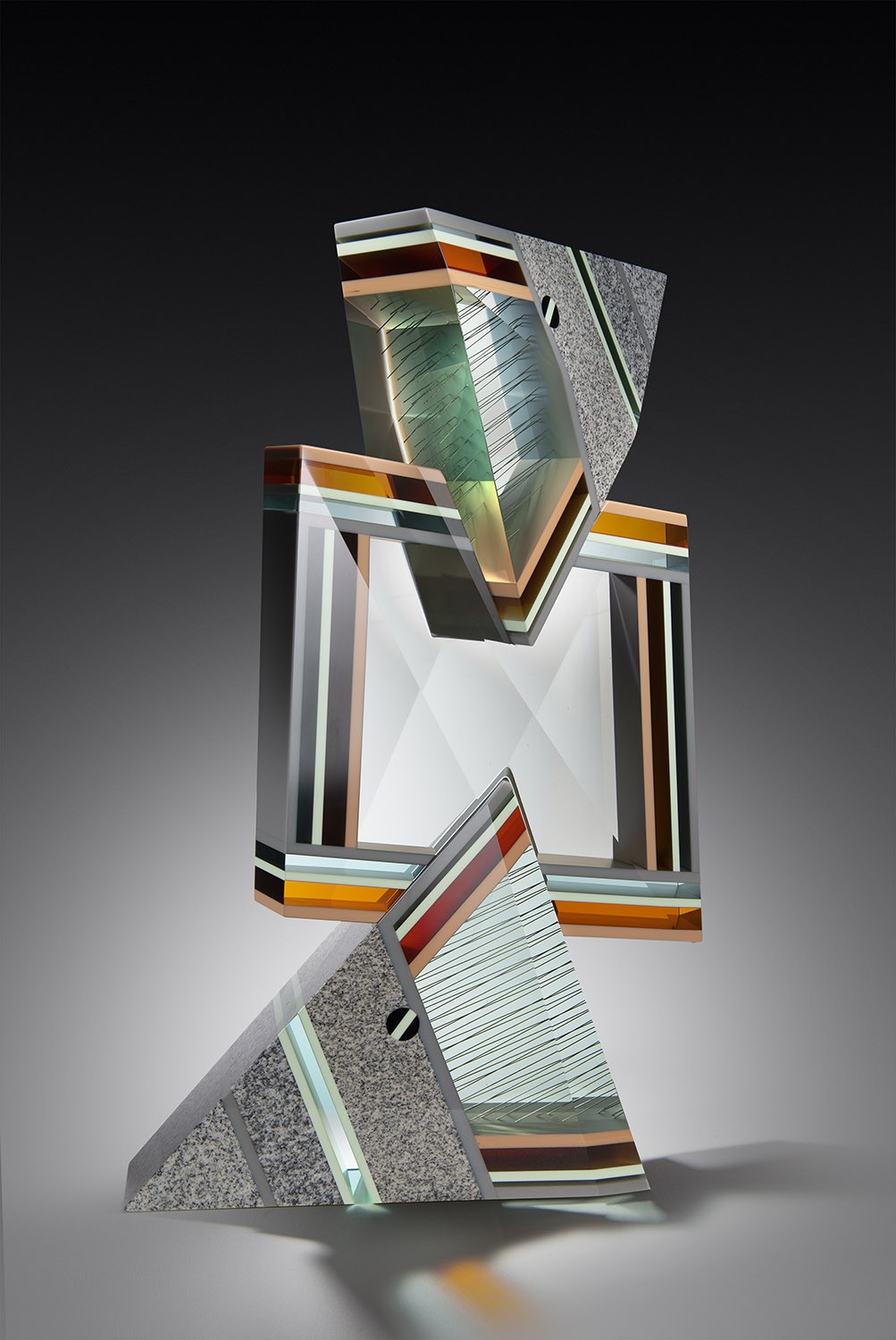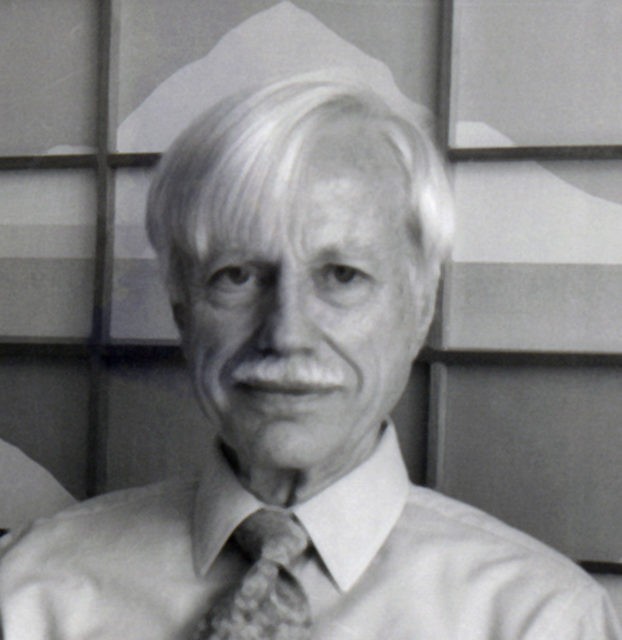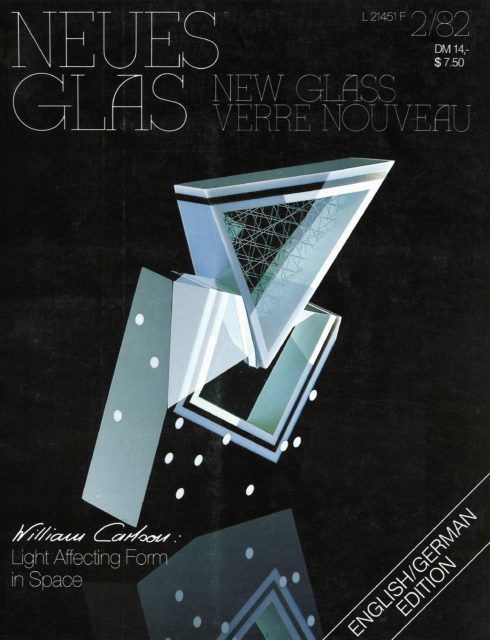In this 1982 interview with Paul Hollister, William Carlson speaks about his use of core drilling and its place in his overall design strategy, questions his use of millefiori as embellishment, and discusses how the “very rigid design definition” in his pieces differs from the open-ended forms in Dale Chihuly’s work. Interview with William Carlson by Paul Hollister, February 24, 1982. (Rakow title: William Carlson interview [sound recording] / with Paul Hollister, BIB ID: 168582) Clip length: 06:42.
Time stamp: 00:00
Clip 1: William Carlson talks about core drilling in his work. Clip length: 01:26.
William Carlson (WC): Those dots that begin to work to help define that infinity and just be another element of the piece. I don’t think any of these pieces—
Paul Hollister (PH): How are the dots achieved? What are they drilled?
WC: Oh, yeah. They’re all core drilled. So I have a core drill that has one outside diameter. And then I have another core drill that has a comparable inside diameter to that outside diameter. They’re all glass. So it’s just drilling a hole and having another plug apply if it is the same size as that hole. Yeah. Now, on the pieces I have here—
PH: [inaudible] of clear glass.
WC: —Nope. It’s the black glass.
PH: Black glass. Okay.
WC: On the two pieces that have—three pieces that have the dots, on the new work, they’re all on the inside, so they’ll have clear glass laminated over them so that they are captive in that chamber. With the newer pieces, I have and I have dots on the exterior, so the black will have a contrast, so instead of being black as an exterior, having that black be very foreboding and to find the piece, the dots are going to begin to break that up. And I think that should be a good design element, too, so I began to change away from just that black, which is—really helped really is awfully confining to the piece. And the dot’s going to help that movement, it’s another design element.
Time stamp: 01:28
Clip 2: Wiliam Carlson talks about millefiori in his work. Clip length: 01:42.
Paul Hollister (PH): You’re back to the old millefiori in this triangle.
William Carlson (WC): Yeah. I’m still doing that.
PH: Nice.
WC: And— the thing is, I guess for me right now. That’s a tough one. Cause I know sometimes it’s not a very attractive type of image to use, because it is true to traditions of glass. And it is so seductive because of all the colors and the movement and all the things that go along with that millefiori technique, but it’s also hard for me to always make that be a part of the pieces. Some of them I think, formally and sculpturally I don’t always need that kind of embellishment of an area. With a lot of these I’ve used just the grid patterns that have overlapped—
PH: Mmm. The wiring.
WC: —yeah, that gives me an element that to me has very much the same kind of detailing with a little less, I guess a hot glass involvement. And I still like those and I still need to work with those, but I don’t know if they’re there as appropriate as they seemed to be a few months ago or back in June when I was, when I had the [inaudible].
PH: Can you get so, if you didn’t use the millefiori you get some that you’d use almost cold glass?
WC: Yeah, cold glass.
PH: Just laminate.
WC: Yeah. Cold glass laminations of the—it could either be the Vitrolite, it could be clear glass, could be the wire glass. The thing is that so many of the pieces are angular at this point to introduce a soft interior—
PH: Round.
WC: —that has a kind of animation that those milliforie have, it’s a bit inconsistent. I mean, it’s not always a solution. I’m still committed to try to follow through with those and try to find out where they fit.
PH: I agree. I agree with you.
Time stamp: 03:14
Clip 3: William Carlson talks about millefiore as an element of the “magic” of glass. Clip length: 01:37.
William Carlson: Well, originally the idea those—the pieces that came that were slumped had an animation to them because as they slumped I never had the mold filled very tightly, so there were, there was a lot of glass process stuff that could happen that I wasn’t always in total control of, and these pieces are so controlled because of the cutting and the grinding that I have to go through. So it was really nice to have an element that had that kind of magic that was glass. Still I was controlled to a certain extent, but there was a lot of things that happened that I wasn’t always aware of, that I would kind of see after the fact, and that was nice. [inaudible] that phenomena is the found objects and to begin to work with that.
Paul Hollister: I think that’s a good point for the view is the contrast of the careful machine ground and lathed and cut areas and general shapes and then the heavy with contrasting things. You really, you don’t quite know what you have [inaudible] rods in and let ‘em sag and melt and so forth. It’s almost like birds caught in a trap or a cage. It has the feel of something alive [inaudible] millefiori caught in this machine, caught in this trap.
Time stamp: 04:53
Clip 4: William Carlson discusses rigidity in his practice. Clip length: 01:38.
William Carlson (WC): Well, you know, I feel that in looking at my work, and I think something that kind of comes up all the time is that I picked this from very formal forms sculpturally, whether they’re sculptures or and whether they allude to function as the bottles did. The bottles had very severe geometric shapes and always in very controlled fashion. They weren’t too loose. And I envy—some of Chihuly’s stuff was just kind of off the wall, just kind of loose and you know, it has—it’s still moving. My work is never, I’ve never allowed that to happen to my work. And I guess maybe I should either loosen up or I should just appreciate what I can, what I like best, obviously [inaudible] fine shape, but—I’ve never allowed my forms, even when they weren’t glass, when they were clay forms, when they were paintings when they were sculpture forms and in metal or plastic or whatever. There’s always been a very rigid kind of design definition to much of the work—not allowing a lot of really open-ended kinds of forms. They’ve always been very resolved and very kind of conclusive. These bars, you know, top and bottom—repetitive forms or whatever. So that’s obviously the, that’s the choice that I must make each time, but I with those bottles, they certainly were framed with the black, and they—you were only allowed to look at that interior one, one or two or three different ways through the different portholes that I would grind and polish, but I—it was a very selective kind of way of viewing the piece. And it still was just as confined.
Permalink